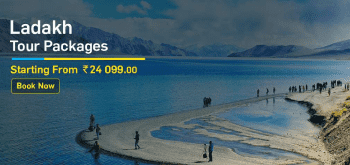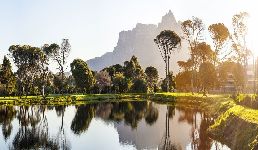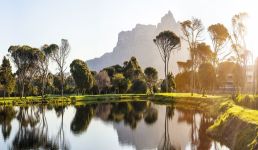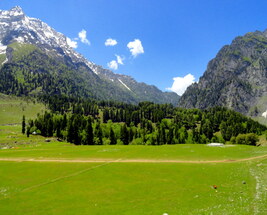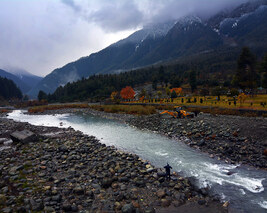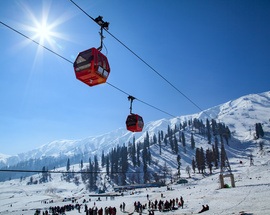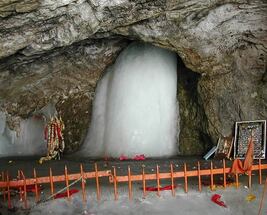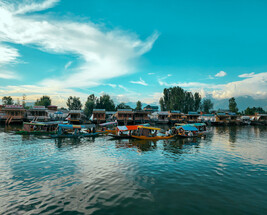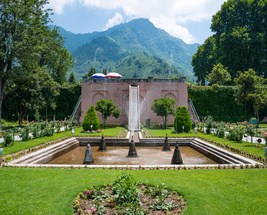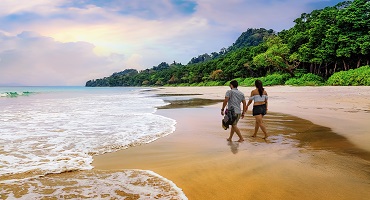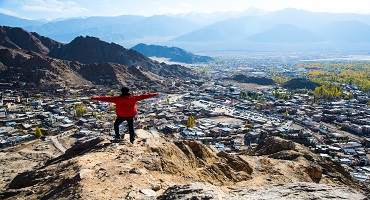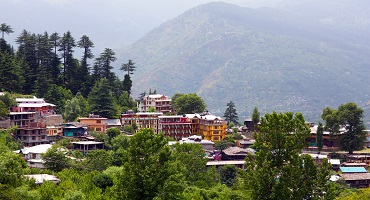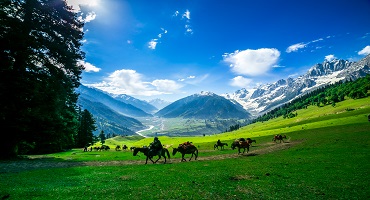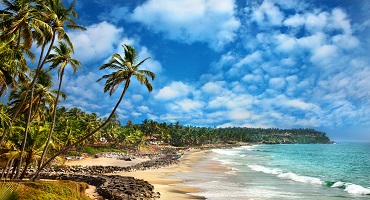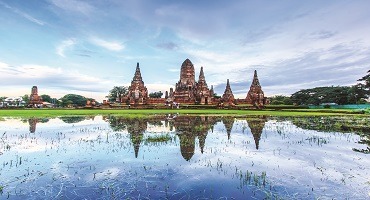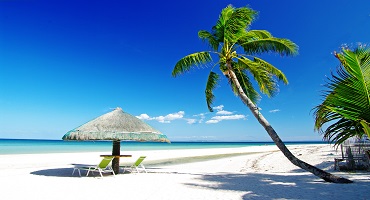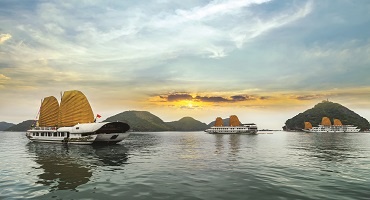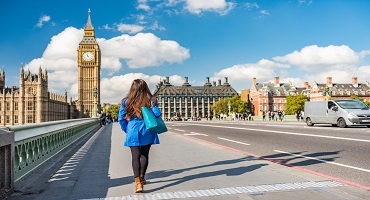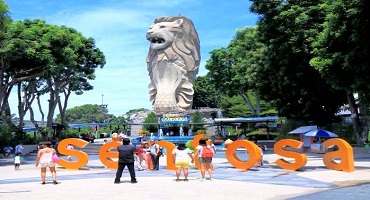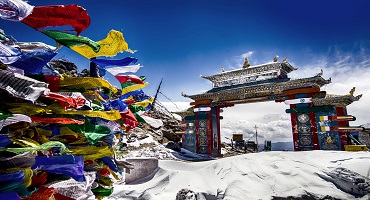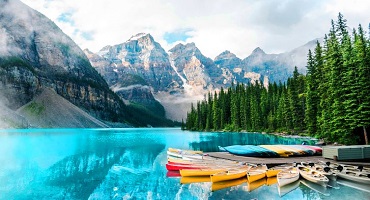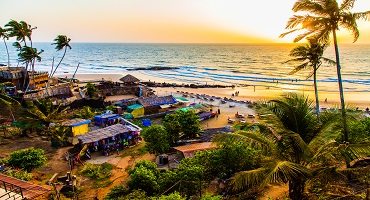If there is paradise on earth, it is here, it is here, it is here.
Penned in the 17th century by Mughal emperor Jehangir, these words ring true even today.
Affectionately called ‘paradise on earth,’ Srinagar, nestled in the stunning valleys of Kashmir, is a dream destination for many tourists, some returning, again and again, to lose themselves in the magic of this place. The weather here is pleasant all around the year, and there is no specific best season to visit Srinagar. There are two main seasons – summer and winter, with autumn thrown in between. Srinagar’s location is such that it receives very little rainfall, and doesn’t have a proper monsoon. The best time to visit Srinagar is from April to October when the weather is not too cold and is perfect for sightseeing.
Whether you choose to visit Srinagar in summer, autumn or winter, the land is magnificent and you will be mesmerised by its unblemished beauty. Are you ready for the holiday of a lifetime?
Summer Season (March-June)
Srinagar is beautiful in every season, but the best time to visit is in summer. The months from March to June undoubtedly witness the most tourists, as the weather is cool and welcoming of all. Daytimes are warm and pleasant at 30°C, and evenings are cool with the temperature never going below 10°C.
Monsoon/ Autumn Season (July-September)
The transition from summer to winter is a spectacular time in Srinagar. From July to September the leaves turn golden, and the entire place becomes picture-perfect, resembling a postcard anywhere you look. The region doesn’t get much rainfall and the temperature hovers between 12 and 15 degrees, making it the best climate to visit Srinagar.
Winter Season (October-February)
Srinagar gets nice and cold in the winter season. The temperature dips into the minus at its lowest and the place experiences heavy snowfall too. Tourists flock to Srinagar to enjoy this magical experience during the cold winter months from October to February.
|
Travel Seasons
|
Min/Max Temperature
|
Season
|
|
March to June
|
14-30 degrees
|
Summer - Warm and pleasant
|
|
July to September
|
12-15 degrees
|
Monsoon / Autumn - Cool and enjoyable
|
|
October to February
|
-4-15 degrees
|
Winter - Cold but beautiful
|
Srinagar during March to June – Pleasant Summers
Temperature: Avg. of 30 degrees high to 14 degrees low
Weather: Summer arrives in Srinagar valley between April and September. And you’d be surprised to know that at its peak, it can get rather hot and sweltering in Srinagar. For a place known for its snowfall and cold climate, a maximum of 30 degrees Celsius can make it uncomfortable. But let this not worry you. The minimum temperature usually is a pleasing 14 degree Celsius. If you get lucky, you’ll reach when the weather in summer of Srinagar is just right.
Summertime in Srinagar is when you can hire a boat, or a shikara, and cover the wide placid expanse of Dal Lake. The flowers are all in bloom and planned gardens, like Nishat Garden and Shalimar garden, come alive with stunning colours and flowers of remarkable beauty. If you are feeling spiritual, you can even visit the Shankracharya Temple while you are there.
Significant events: Baisakhi, one of Srinagar’s most beloved festivals, is celebrated every year in April, in summer. If you are in Srinagar in summer, this is a celebration unlike any other. Yes, it is a Sikh festival celebrated to mark the start of the Sikh New Year, but in Srinagar it is celebrated by one and all. This all-inclusive festival is celebrated in a place called Badamwari. It is the season of almond blossoms and that makes for the perfect backdrop to celebrate the auspicious beginning of the New Year.
Why you should visit now: Everything is in place for you to have the perfect summer holiday in Srinagar – the weather, the landscape and the festivities too.
Know before you visit: Do keep in mind that planning a holiday to Srinagar during summer can be a bit of a gamble. If you arrive when the weather is in its lower ranges, you will have a wonderful time. However, if the weather is mean, it could get too hot for you to want to leave the comfort of your air-conditioned hotel room.
Tips: Wear enough sunblock. Keep your camera charged and ready. Srinagar offers you several opportunities for beautiful photographs.
Srinagar during July to September – Autumn/ Monsoon Season
Temperature: Avg. of 15 degrees high to 12 degrees low.
Weather: Owing to its geographical location, Srinagar does not receive much rainfall. However, it’s the transition from summer to winter, which draws the crowds to the beautiful land of Srinagar. The trees are getting ready to shed their leaves, and you will only see golden and copper hues everywhere you look. This is the perfect place and time to have an outdoor picnic. The weather of Srinagar in autumn has started to get colder, but it is nowhere as chilly as winter yet. You can comfortably walk about and enjoy the city. The sun is not as harsh as summer and feels rather warm on your back. The skies are clear for miles around and there is light step in your walk as you walk about savouring the sights of Srinagar.
Significant events: Srinagar is bursting with tourists and every local is trying his best to woo you with a holiday of your lifetime. Whether you decide to walk the streets by yourself and discover the city, or whether you choose to ride the shikara and feel the breeze in your hair, there is plenty to do in Srinagar to turn this vacation into the best holiday of your life. Srinagar is at her most spectacular best. You can sit in the many gardens and behold the beauty of one of the most stunning places on this planet – truly a paradise waiting to be discovered.
Why you should visit now: It’s not too hot, not is it too cold; the landscape is beautiful and the people are warm and welcoming.
Know before you visit: Autumn is a favourite among tourists, so book your hotel in advance to avoid getting disappointed.
Tips: Pack woollens even if winter has not set in. Nights can get chilly.
Srinagar during October-February – Winter Season
Temperature: Avg. of 15 degrees high to -4 degrees low.
Weather: Winter in Srinagar is one of the most beautiful times. The place is shrouded with white snow and the delicious cold lasts from October to March. You might think all the months are cold and it is freezing most of the time. However, that’s not the case. The mornings in winter are pleasant with the sun shining down brightly and warmly. This takes the bite out of the cold. It is the ideal time to take a stroll on the streets of Srinagar. If you wish to experience snowfall, you must visit Srinagar during December and January. However, this is also when most tourists decide to visit as well. This could well mean blocked roads, crowded spots and steep prices. If you are still planning a winter holiday to Srinagar, do so with caution.
You can choose to get away from the town and make trip away from the crowds. Some places to consider adding to your itinerary are Dachigam Wildlife Sanctuary, Charar-i-Sharif, Badgam, Harwan Gardens, Pulwama and Pari Mahal.
Significant events: Winter in Srinagar is a beautiful season and it also coincides with two important festivals. The first is Shivratri, which is celebrated in February. This festival commemorates the benevolence and might of Lord Shiva. Temples dedicated to Lord Shiva, such as the famous Shankaracharya Temple, are decorated and the brightly-lit monuments are a sight to behold.
Nuroz is the second major festival of Srinagar. This is celebrated closer to the end of the winter season, usually in March. Interestingly, Nuroz is an Armenian festival and yet it is celebrated with much gusto by the locals of Srinagar.
Why you should visit now: Snowfall, snow and snow-capped mountains, these are all the reasons that you need to visit Srinagar in winter. If you like snow sports, then book that ticket now.
Know before you visit: Book your tickets well in advance. Winter is a popular time to visit Srinagar and you don’t want to miss the window.
Tips: Carry more woollens than you think you will need because believe us, you will need them.
Srinagar has been on everyone’s bucket list forever. If you still haven’t visited the place, then what’s stopping you? Browse through our Srinagar Tour Packages and get all your Srinagar queries answered. We will share with you tips and handy hints on how to make the most of your visit to this paradise on earth. Need help with tickets? We can assist you. Book with Thomas Cook India and you can get all the help that you need with your trip, not just to Srinagar but anywhere in the world.






